The experts in boutique travel To Peru and South America

Puno is considered the heart of Peruvian folklore, and no other place highlights that fact than the island of Taquile. Situated on the Peruvian side of Lake Titicaca, the island’s remote location has allowed locals to continue their traditions without too much Western influence. Stunning lake and mountain landscapes and spectacular weaving traditions await you on Taquile.
*Cover photo by Ana Castañeda for Inca Expert Travel.
Taquile Island is seemingly on top of the world. In the middle of the Peruvian half of Lake Titicaca, the shores of Taquile sit at 12,959 ft (3,950 m) above sea level, while its highest point reaches 13,287 ft (4,050 m).
Despite its (literally) breathtaking elevation, the island’s size is pretty modest at 2.21 square miles (5.72 km²). However, it is still the second largest Peruvian island on the lake after Amantaní island.
The island is 28 miles (45 km) from the region’s largest city Puno on the lakeshore. It takes about 3 hours by boat to reach the island from Puno.
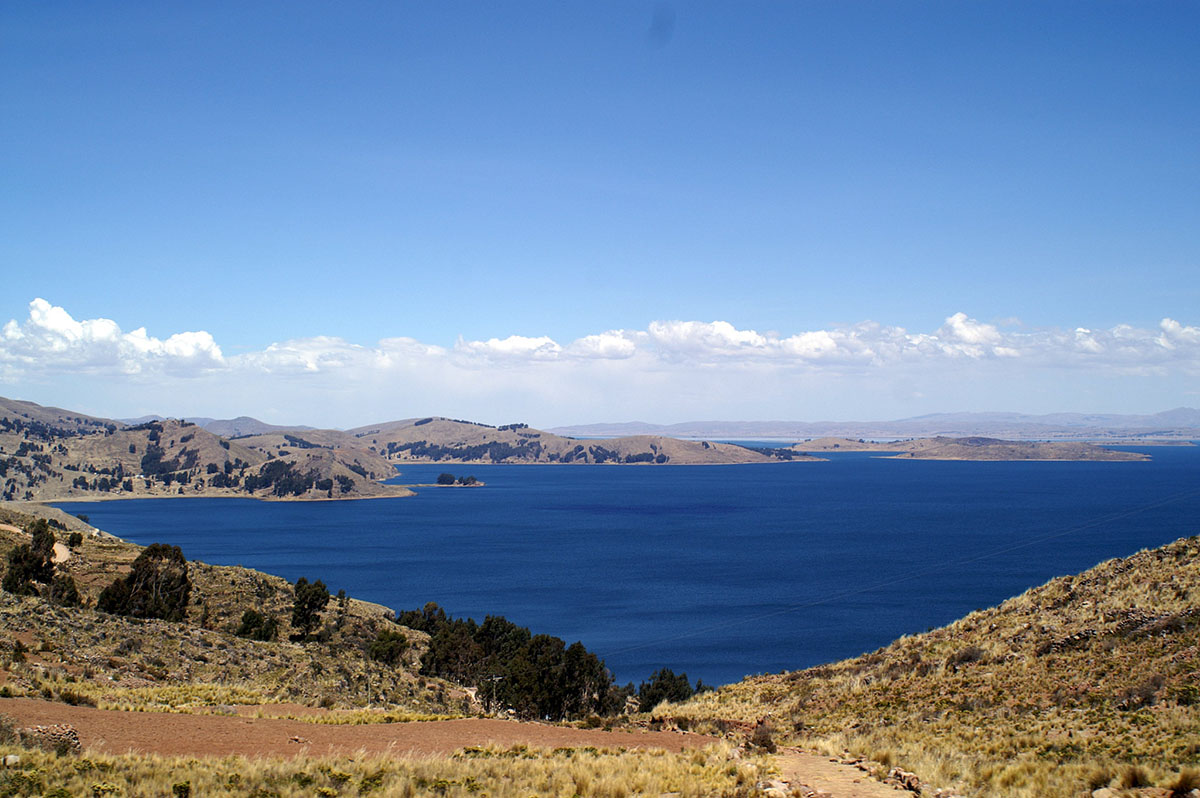
The island was once part of the vast Inca Empire until the Spanish conquered the territory during the 16th century. The Incas called it Intika, and the Quechua locals—descendants of the Incas— still called it that today. The name Taquile comes from the Spanish nobleman Pedro Gonzales de Taquila.
The Spanish imposed cultural restrictions on the inhabitants of the island. For example, they weren’t allowed to wear traditional Inca clothing but had to wear campesino, or peasant, styled clothing instead. However, because of the island’s remote location, especially at a time without motorized boats, many other local customs remained intact. Today’s islanders, numbering around 2,200, continue the generations-old tradition of subsistence farming and fishing.
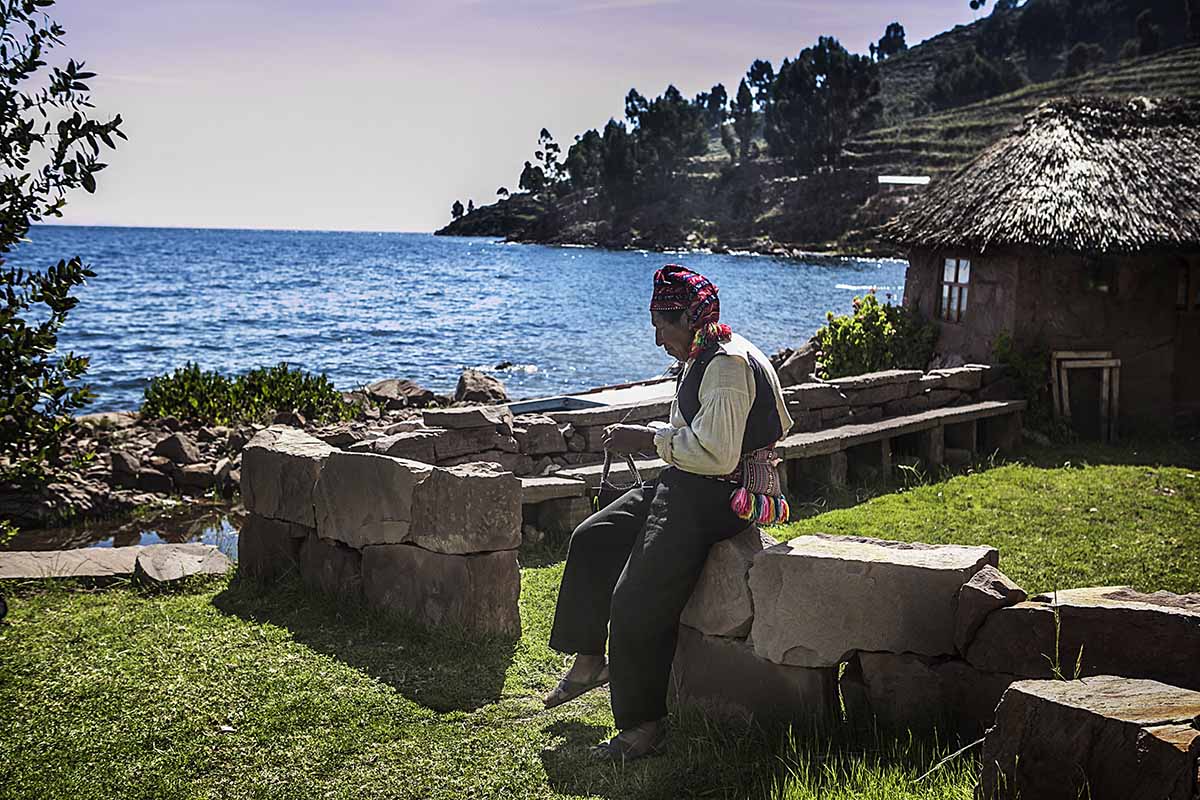
Perhaps what Isla Taquile is most well known for today is its weaving tradition. Weaving is, of course, an integral part of local culture in many parts of Peru. It is a way for indigenous peoples to represent their history and society with geometric and natural shapes as well as colors. The weavers of Taquile Island, in particular, have an interesting tradition where both women and men take up the loom.
Tourism on Taquile took off in the 1970s and transformed their weaving traditions. With such international interest in their woven goods, locals adjusted their patterns and colors for an international market. For example, the traditional background color for Taquileños’ woven goods is red. However, many started to use purple as a principal background color to appease their new international buyers. Also, to keep up with increased demand, local weavers now buy factory spun yarn rather than hand spinning the wool themselves.

If this makes you hesitant to buy woven goods on the island to bring home as a Peruvian souvenir, don’t fret. They still make all of their products using local traditional techniques, including a four-point grounded loom. In fact, Taquileños are among the few indigenous communities in Peru to forgo Western dress and keep their traditional garments.
The patterns and colors may have evolved over time, but the meaning is still present in their work. Even UNESCO has recognized their incredible local art by recognizing Taquile and Its Textile Art as a “Masterpieces of the Oral and Intangible Heritage of Humanity” in 2005.
Lake Titicaca Tours:
Taquile welcomes approximately 40,000 tourists each year. Most people visit the island on a full day tour of Lake Titicaca, but you can also stay overnight on Taquile. Learn more about these two options below.
Standard full-day Lake Titicaca tours will include a visit to the floating Uros islands and then a visit to Taquile before rounding back to Puno. Once docked at Taquile, you will need to hike up a set of stairs to reach the more populated area of the island. This can be a tough climb for older travelers, as well as those who are not sufficiently acclimatized to the altitude.
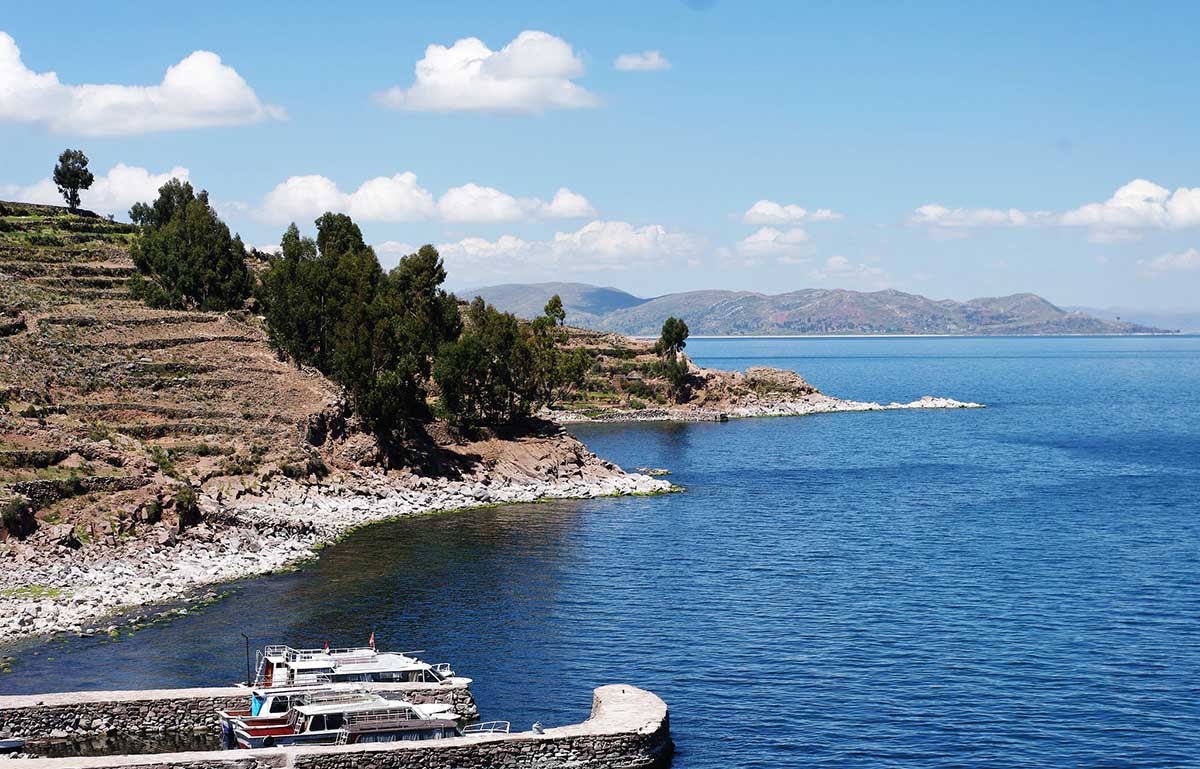
In the main village of the island, you will be able to explore the main square (or plaza) and local shops. All of the shops, restaurants, and homestays on Taquile are collectively controlled by the villagers themselves. This allows everyone on the island to profit from local tourism. In the main square, you will be able to sit down and have a typical meal of veggie soup and trout (or an omelette for vegetarians). Wash it down with a hot mug of muña tea, a local mint-like herb that serves as a local remedy for altitude sickness.
After lunch, enjoy a performance of traditional dances. Brave travelers may even be moved to join in for a few steps! Those with more than one left foot can opt to see what’s on offer at the local handicrafts stand. Taquile is especially known for its woven and knit goods. Throughout the island, it’s very common to see men knitting at breakneck pace. Your local guide will explain the history and cultural significance of their handicrafts and native dress.

While experiencing local culture is an absolute delight on Taquile, another main attraction of the island is its impressive natural landscape. Touring the island inevitably involves taking paths around its hilly terrain. You will pass local homes, herds of sheep, as well as pre-Inca ruins, and archways that beautiful frame the lake. Those up for a high altitude hike can walk up to the island’s lookout point. From there, you can marvel at the incredible views out of Lake Titicaca with the Andes mountains off in the distance.
It is also possible to visit Taquile without reserving a tour. From Puno’s port you can take a public ferry to Taquile. These ferries are called colectivos in Spanish and cost 25 soles, or about US $7, roundtrip. The morning ferry for Taquile officially departs at 7:30 am. However, it may leave a bit earlier or a bit later depending on how long it takes for the boat to fill up.
Once on Taquile, you will be able to roam around the island at your own pace. You can drop in on touristic areas and textile shops, hike to the farthest ends of the islands, or both. Just be sure to check the time for your return boat in the afternoon. Since the island only has homestays, it may not be very easy finding lodging should you miss it!

For those who want to spend more time on Taquile, it is also possible to spend the night. Locals are ready to welcome tourists into their homes. Houses on Taquile are quite modest. Although the island has several solar panels, most homes don’t have electricity. Also, your hosts may have an outhouse rather than indoor plumbing. However, spending this extra time with an indigenous family is a rewarding experience that you will surely remember for the rest of your life! Away from the distractions of your everyday life, slow down to enjoy the sunset over the Peruvian altiplano and learn more about an alternative way of life. (Another Lake Titicaca homestay option is on Amantani Island).

Whichever adventure you choose, a full day of exploration or two, return to your cozy Puno hotel for a well deserved rest.
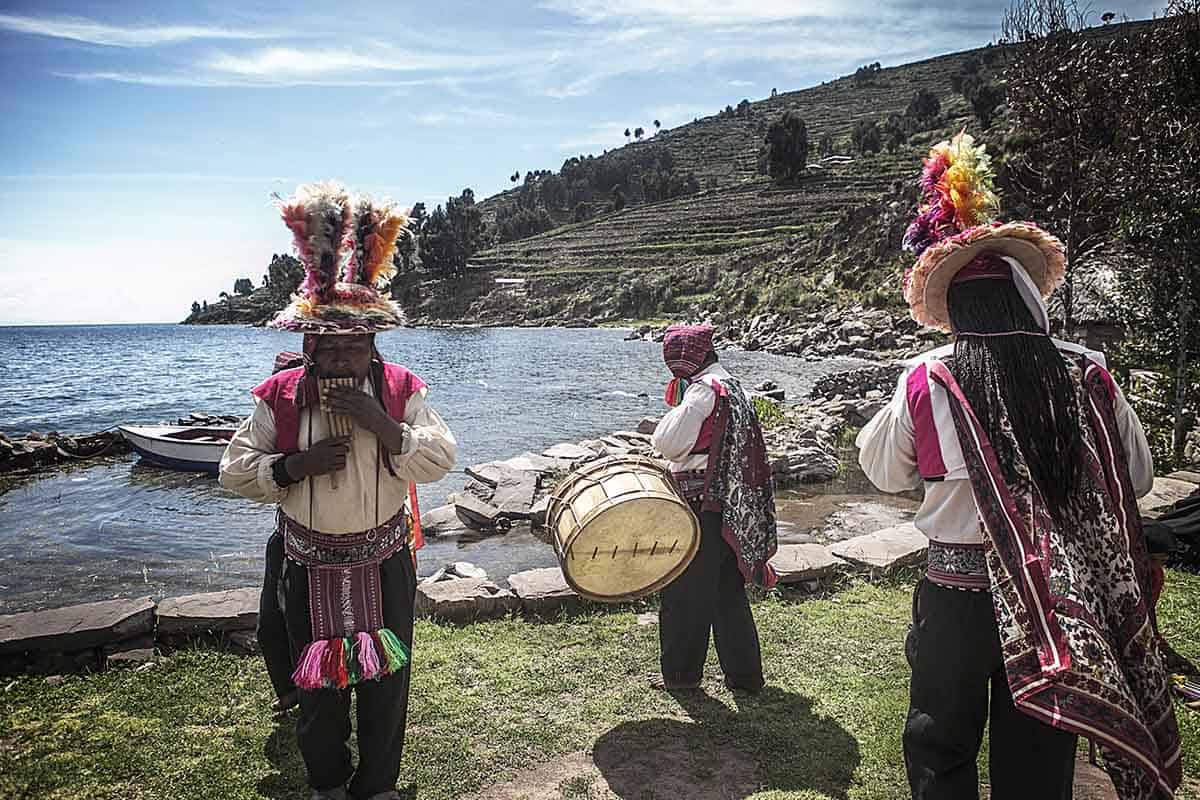
Taquile sits at a very high elevation (12,959-13,287 ft/ 3,950-4,050 m) and is quite hilly. Because of this, it is very important to be acclimated to the altitude. This can be done by first acclimating in Arequipa (7,700 ft/ 2,340 m) or Cusco (11,150 ft/ 3,399 m) before moving on to Puno. In most instances, you will first make your way to Puno—by train, plane, or bus—and spend the night before visiting the lake the next day.
The dock on one side of the lake includes 500 steps up to start your Taquile visit. This can be a lot even if you feel that you have adjusted to the altitude. Be sure to drink plenty of water and take breaks when you need them. If you begin to feel sick, try to get your hands on a mug of coca or muña tea or some coca candies.
Like Cusco and Machu Picchu, Lake Titicaca has a rainy season from December to March. These months correspond to the southern hemisphere’s summer, meaning that air temperatures will be warmer over all. However, the region experiences higher rainfall, with the heaviest rains in January and February.
The best time to visit Lake Titicaca is during the dry season from May to September. Although air temperatures will be a bit chillier, you are most likely to have sunny days throughout your visit.

July and August are the driest months and also correspond to the peak travel season in Cusco and Machu Picchu. Even though Machu Picchu will see large crowds during these months, the Puno region remains an “off the beaten path” destination with relatively few visitors.
When visiting Lake Titicaca, you must prepare for both intense sun and chilly wind. Because of the high elevation and proximity to the equator, the sun is very strong. UV rays will also be bouncing off the lake, increasing your sun exposure. Be sure to protect yourself with a hat (with a strap!), sunglasses, and plenty of sunscreen.
Also, the high elevation and openness of the lake also means that winds will be very chilly, especially if you spend the night. On top of your sunscreen, bundle up when you are out on the water or hiking in the open air. You can layer with knit sweaters and fleece jackets with a parka on top, or you can opt for a winter jacket.
If traveling during the rainy season (December-March) be sure to pack a rain jacket or poncho, too.

Taquile is a dream destination for anyone looking for intricate cultural traditions set against the most picturesque backdrop. It’s also a welcome respite from the hustle and bustle of Peruvian cities like Lima and Cusco. Climb to the top of the world and breath in the fresh air of the serene Andean lake surrounding Taquile Island.
Ready to visit Taquile? Let us help you get there! Contact our experts for a custom travel package.

Family trips abroad gave Rachel an insatiable taste for foreign languages and cultures.
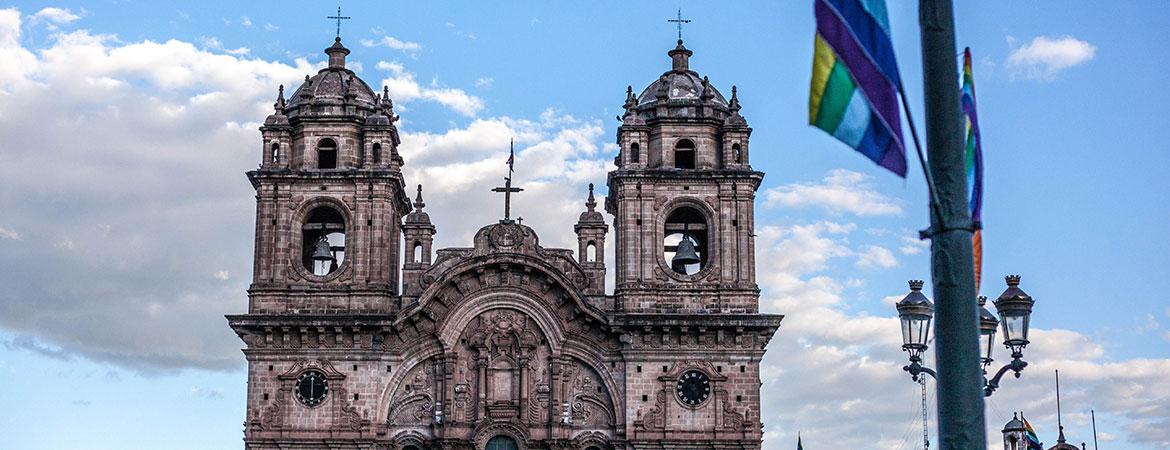
In Cusco, the festival of Corpus Christi begins when the patron saints and virgins from all the city’s parish churches gather on the Plaza de Armas. Loaded with Andean symbolism and accompanied by brass bands and brilliantly costumed dancers, Corpus Christi in Cusco is truly a sight to behold.
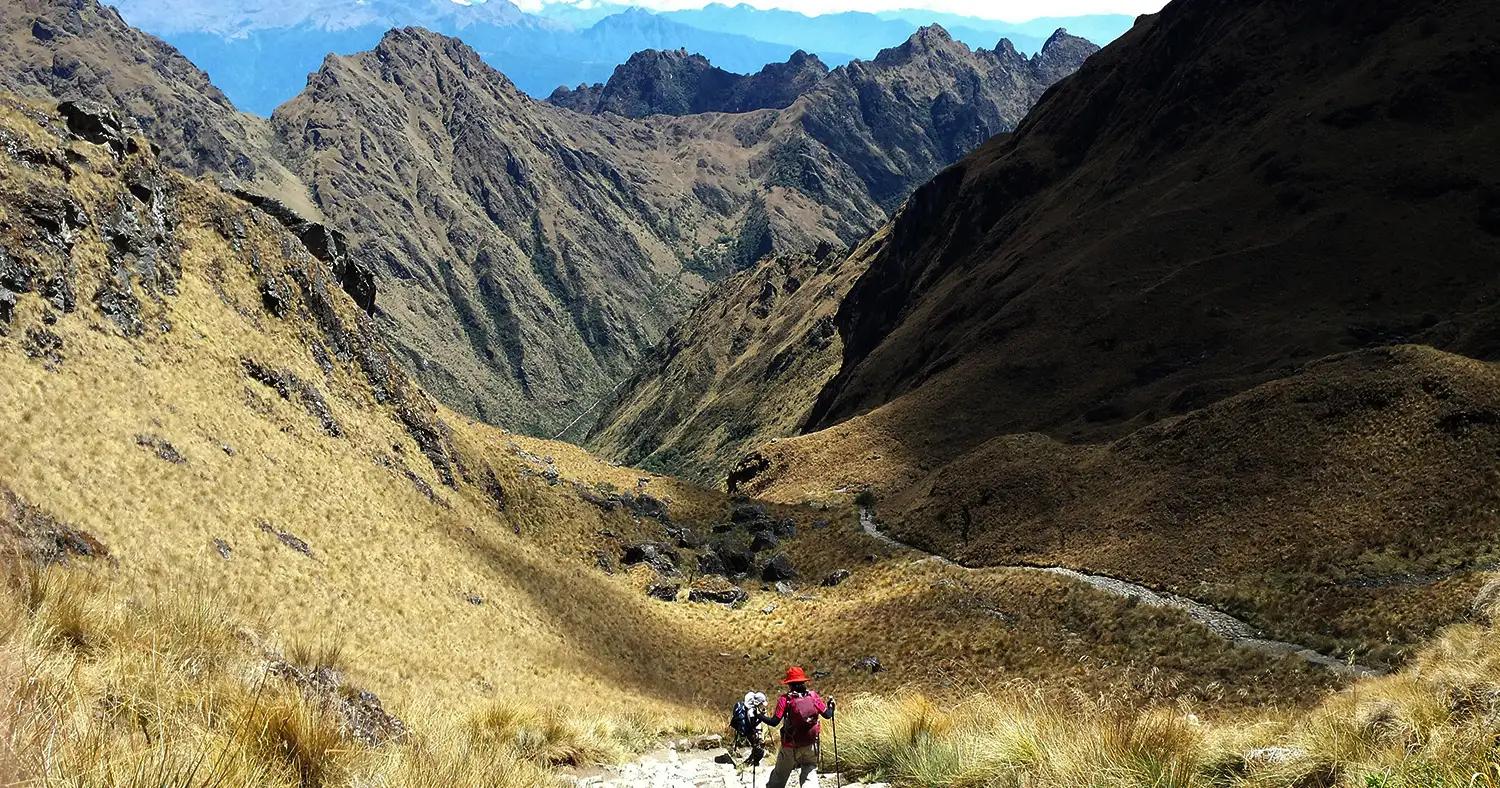
So, you've decided to hike the iconic Inca Trail to Machu Picchu! The next step is choosing your dates and securing your Inca Trail permit. However, before you proceed, there are a few key factors to consider, including the ideal time for trekking, weather conditions, and how far in advance you should book.